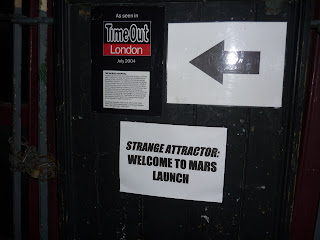 In about 18 hours’ time I shall be shaking the asbestos dust out of my clothes, putting the Shunt Vault firmly behind me and heading for the clean air of Switzerland to deliver a programme of lectures and readings.
In about 18 hours’ time I shall be shaking the asbestos dust out of my clothes, putting the Shunt Vault firmly behind me and heading for the clean air of Switzerland to deliver a programme of lectures and readings.The events are as follows:
Monday, 24.11, 17.00-18.30, Lucerne, University of Applied Sciences and Art, Institute of Design – ‘Welcome to the Labyrinth’ an informal talk on exploring the digital regime, ‘assemblage critique’ and the concept of design as thought.
Tuesday, 25.11, 10.30-12.00, Bern University of the Arts – ‘Information as Art Form’ a lecture on the role of research and interdisciplinary practice in the development of my work as a writer. This will include a screening of ‘SpaceBaby’, plus a presentation of ‘Welcome to Mars’ and a reading from the book.
Wednesday, 26.11, 16.15-17.45, Lucerne, University of Applied Sciences and Art, Institute of Design – ‘Images of Ecstasy in Print Media’ a joint lecture with Dr Axel Vogelsang.
The poster reproduced above has been designed by students at Bern University of the Arts, to whom I offer my deepest thanks and appreciation. It feels as if I know you already.
























.jpeg)

.jpg)





